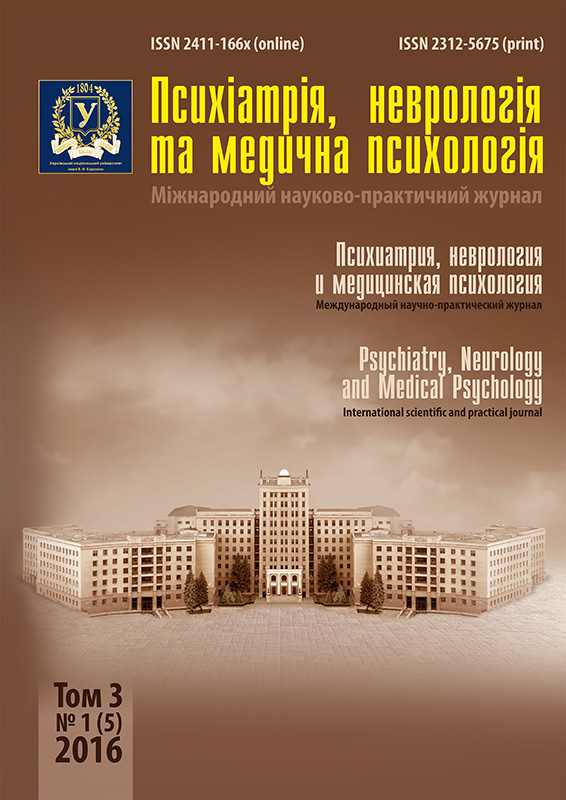Застосування комп’ютерних ігрових технологій у реабілітації дітей з аутизмом
Анотація
Кількість дітей із моторною дискоординацією та диспраксією при розладах аутичного спектру сягає 85 %. Ефективність їх реабілітації залежить від пластичності нервової системи, яку стимулюють багаторазове повторення необхідних рухів, інтенсивність тренувань та позитивна мотивація. Недосконалість механічних тренажерів полягає у монотонності та відсутності мотивації до регулярних та тривалих занять. У Міжнародній клініці відновного лікування (МКВЛ) та Реабілітаційному центрі «Еліта» поєднали корисний, але нудний процес тренування із захоплюючими комп’ютерними іграми, яких створено вже понад 20. Важливим етапом зворотнього контролю та можливості безперервних занять є створення Інтернет-системи домашнього ігрового тренування. Інформація про перебіг ігрових сесій, їх тривалість та результати доступні на веб-сторінці. Інструктор здійснює дистанційний контроль, корегує програму та дає рекомендації.
Завантаження
Посилання
Miyahara M., Tsujii M., Hori M. Brief report: motor incoordination in children with Asperger syndrome and learning disabilities. J. Autism Devl. Disorders, 1997, no. 27, pp. 595-603.
Kachmar O., Kozyavkin V. Rehabilitation computer stepping games for patients with cerebral palsy. Developmental Medicine & Child Neurology. Special issue: Abstracts of the European Academy of Childhood Disability 27th Annual Meeting, 2015, vol. 57, issue Supplement s4, pp. 46.
Salonius-Pasternak D. F., Gelfond H. S. The next level of research on electronic play: potential benefits and contextual influences for children and adolescents. Human Technology, 2005, no. 1(1), pp. 5-22.
Allen D. H. The use of computer fantasy games in child therapy. Using computers in clinical practice [psychotherapy and mental health applications] [ed. M. D. Schwartz], New York, The Hawthorne Press, Inc., 1984, pp. 329-334.
Clark B., Schoech D. A computer-assisted thera peutic game for adolescents: initial development and comments. Using computers in clinical practice [psychotherapy and mental health applications] [ed. M. D. Schwartz], New York, The Hawthorne Press, Inc., 1984, pp. 335-353.
Entertainment Software Association Industry Facts. Retrieved from 2014. Available at: http:// www.theesa.com/facts/index.asp.
NPD Group More Americans play video games than go out to movies. Retrieved from 2009. Available at: https://www.npd.com/wps/portal/npd/us/news/press-releases/pr_090520/.
Baranowski T., Buday R., Thompson D. I., Baranowski J. Playing for real: vidogames and stories for health-related behavior change. American Journal of Preventive Medicine, 2008, no. 34(1), pp. 74-82. Available at: 10.1016/j.amepre. (accessed 09.027.2007).
Kato P. M. Video games in health care [closing the gap]. Review of General Psychology, 2010, no. 14(2), pp. 113-123. Available at10.1037/a0019441.
Parisod H., Pakarinin A., Kauhanen L., Aromaa M., Leppanen V., Liukkonen T. [et al.] Promoting children’s health with digital games [A review of reviews]. Games for Health Journal: Research, Development, and Clinical Applications, 2014, no. 3(3), pp. 145-153. Available at: 10.1089/g4h.2013.0086.
Tatla S. K., Radomski A., Cheung J., Maron M., Jarus T. Wii-habilitation as balance therapy for children with acquired brain injury. Developmental Neu-rorehabilitation, 2014, no. 17(1), pp. 1-15. Available at: 10.3109/17518423.2012.740508.
Szturm T., Betker A. L., Moussavi A. D., Good-man V. Effects of an interactive computer game exercise regimen on balance impairment in frail community-dwelling older adults [A randomized clinical trial. Physical Therapy], 2011, no. 91(10), pp. 1449-1462. Available at: 10.2522/ptj.20090205.
Kozijavkin V., Kachmar O. Rehabilitation with the ease of the game. Cerebral Palsy Magazine, 2004, pp. 31-34.
Hsu J. K., Thibodeau R., Wong S. J., Zukiwsky D., Cecile S., Walton D. M. A «Wii» bit of fun: the effects of adding Nintendo Wii bowling to a standard exercise regimen for residents of long-term care with upper extremity dysfunction. Psychotherapy Theory and Practice, 2011, no. 27(3), pp. 185-193. Available at: 10.3109/09593985.2010.483267.
Douris P. C., McDonald B., Vespi F., Kelley N. C., Herman L. Comparison between Nintendo Wii Fit aerobics and traditional aerobic exercise in sedentary young adults. Journal of Strength and Conditioning, 2012, no. 26(4), pp. 1052-1057. Available at: 10.1519/JSC.0b013e31822e5967.
Cuthbert J. P., Staniszewski K., Hays K., Ger-ber D., Natale A., O’Dell D. Virtual reality-based therapy for the treatment of balance deficits in patients receiv-ing inpatient rehabilitation for traumatic brain injury. Brain Injury, 2014, no. 28(2), pp. 181-188. Available at: 10.3109/02699052.2013.860475.
Kloos A. D., Fritz N. E., Kostyk S. A., Young G. S., Kegelmeyer D. A. Video game play (Dance Dance Revolution) as a potential exercise therapy in Huntington’s disease [A controlled clinical trial. Clinical Rehabil-itation], 2013, no. 27(11), pp. 972-982. Available at: 10.1177/0269215513487235.
Stuifbergen A. K., Becker H., Perez F., Morison J., Kullberg V., Todd A. A randomized controlled trial of a cognitive rehabilitation intervention for persons with multiple sclerosis. Clinical Rehabilitation, 2010, no. 26(10), pp. 882-893. Available at: 10.1177/0269215511434997.
Bessell A., Clarke A., Harcourt D., Moss T. P., Rumsey N. Incorporating user perspectives in the design of an online intervention tool for people with visible dif-ferences: face IT. Behavioural and Cognitive Psychotherapy, 2010, no. 38, pp. 577-596. Available at: 10.1017/S1352465810000305.
Brown J. L., Vanable P. A., Carey M. P., Elin L. The development of a computer-administered cognitive-behavioral intervention to promote stress management among HIV+ women. Journal of Cognitive Psychotherapy: An International Quarterly, 2010, no. 24(4), pp. 265-280. Available at: 10.1891/0889-8391.24.4.265.
Lii W. H. C., Chung J. O. K., Ho K. Y. The effectiveness of therapeutic play, using virtual reality computer games, in promoting the psychological well-being of children hospitalized with cancer. Journal of Clinical Nursing, 2011, no. 20, pp. 2135-2143. Available at: 10.1111/j.1365-2702.2011.03733.x.
Janssen J., Verschuren O., Levac D, Ermers J., Ketelaar M. Structured game-related group therapy for an adolescent with acquired brain injury [A case report]. Journal of Pediatric Rehabilitation Medicine: An Interdisci plinary Approach, 2012, no. 5, pp. 125–132.
Granic I., Lobel A., Engels R. C. M. E. The benefits of playing video games. American Psychologist, 2014, no. 69(1), pp. 66-78. Available at: 10.1037/a0034857.
Bisoglio J., Michaels T. I., Mervis J. E., Ashinoff B. K. Cognitive enhancement through action video game training [Great expectations require greater evi-dence]. Frontiers in Psychology, 2014, no. 5(136), pp. 1–9.
Blum-Dimaya A., Reeve S. A., Reeve K. F., Hoch H. Teaching children with autism to play a video game using activity schedules and game-embedded simulta-neous video modeling. Education and Treatment of Children, 2010, no. 33(3), pp. 351–370. Available at: 10.1353/etc.0.0103.
Ferguson B. R., Gillis J. M., Sevlever M. A brief group intervention using video games to teach sports-manship skills to children with autism spectrum disorders. Child and Family Behavior Therapy, 2014, no. 35(4), pp. 293-306. Available at: 10.1080/07317107.2013.846648.
Coyne S. M., Padilla-Walker L. M., Stockdale L., Day R. D. Game on Girls: Associations between co-playing video games and adolescent behavioral and family outcomes. Journal of Adolescent Health, 2011, no. 49(2), pp. 160–165. Available at: 10.1016/j.jadohealth. 2010.11.249.
Engelhardt C. R., Mazurek M. O., Sohl K. Media use and sleep among boys with autism spectrum disorder, ADHD, or typical development. Pediatrics, 2013, no. 132(6), pp. 1081-1089. Available at: 10.1542/peds.2013-2066.
Elson M., Ferguson C. J. Twenty-five years of research on violence in digital games and aggression [Empirical evidence, perspectives, and a debate gone astray]. European Psychologist, 2014, no. 19(1), pp. 33-46. Available at: 10.1027/1016-9040/a000147.
Griffiths M. D. The therapeutic use of video-games in childhood and adolescence. Clinical Child Psychology and Psychiatry, 2003, no. 8, pp. 547-554. Available at: 10.1177/13591045030084012.
Kozyavkin V .I., Kachmar O. A., Voloshin T. B., Ablikova I. V. Rehabilitation igroterapiya computer using a dance mat]. ІІІ ezhegodnaya mezhdistsiplinarnaya nauchno-prakticheskaya konferentsiya s mezhdunarodnym uchastiem «Detskiy tserebral’nyy paralich i drugie narusheniya dvizheniya u detey» [Sbornik tezisov, 31 oktyabrya – 1 noyabrya, 2013] [III the annual interdisci-plinary scientific and practical conference with interna-tional participation “Cerebral Palsy and other movement disorders in children”[A collection of abstracts, October 31 - November 1, 2013]]. Moscow, 2013, p. 49. (In Russ.)
Kozjavkin V. I., Kachmar O. O., Ablikova I. V., Kachmar B. O. Reabilitacijna komp’juterna igroterapija iz vykorystannjam tancjuval’nogo kylymka [Play therapy Rehabilitation computer using a dance mat]. Social’na pediatrija ta reabilitologija, 2013, no. 2(5), pp. 20-25. (In Ukr.)
Kozyavkin V. I., Kachmar O. A., Ablikova I. V., Voloshin T. B.Internet sistema domashney igrovoy trenirovki dvigatel’nykh narusheniy [Internet gaming system home workout movement disorders]. Chetvertyy Baltiyskiy Kongress po detskoy nevrologii. Sbornik tezisov, 3-4 iyulya 2013 [Fourth Baltic Congress on Pediatric Neurology. Abstracts, 3-4 July 2013]. St. Petersburg, 2013, p. 145. (In Russ.)
Kozyavkin V., Kachmar O., Melnychuk V., Kach-mar B. Web-based Home Rehabilitation Gaming System for Balance Training. Journal of Accessibility and Design for All (CC) JACCES, 2014, special issue: 104-116. ISSN: 2013-7087.
Kozjavkin V. I., Kachmar O. O., Ablikova I. V., Markelov V. E., Kachmar B. O. Internet-systema domashn’ogo igrovogo trenuvannja ruhovyh porushen’ [Internet gaming system home workout movement dis-orders]. Social’na pediatrija i reabilitologija, 2012, no. 1, pp. 24-29. (In Ukr.)
Авторське право (c) 2016 В. І. Козявкін, Т. Б. Волошин, О. О. Качмар

Цю роботу ліцензовано за Міжнародня ліцензія Creative Commons Attribution 4.0.




